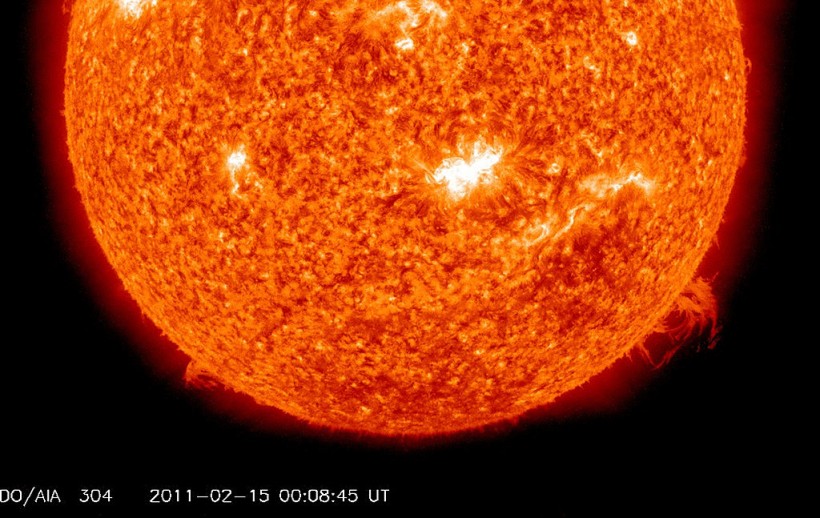(Photo : Image by NASA/Solar Dynamics Observatory via Getty Images)
Almost all of SpaceX's internet satellites were lost to a strong geomagnetic storm after having launched on Feb. 3 from the Kennedy Space Center in Florida.
Around the same time, 49-member cohort of the newly-launched satellites encountered a catastrophic solar storm, disabling at least 40 of them.
NASA had long been spotting potentially catastrophic geomagnetic storms before they struck. These powerful storms can "literally melt humanity's electronic infrastructure," writer Andrew Tarantola quoted in Engadget.
These storms damage electronics and satellites in orbit.
In the recent case, SpaceX reveals that 40 of the communication satellites will re-enter or have already entered Earth's atmosphere.
A statement from SpaceX in Science & Technology explained that the storm greatly increased atmospheric density around the satellites' low orbit, creating a friction that disabled them.
Jonathan McDowell, a Harvard-Smithsonian astrophysicist, said that the incident is believed to be the largest collective loss of satellites from a single geomagnetic event.
Threat of solar storms for life on Earth
Research showed that destructive solar storms hit Earth every century or two and could affect life on Earth at any time, especially since this form of magnetic fields and plasma gas are unpredictable and difficult to prepare for.
Aside from destroying modern technologies, they do have limited effects on humanity.
"These storms cause the atmosphere to warm and atmospheric density at our low deployment altitudes to increase. In fact, onboard GPS suggests the escalation speed and severity of the storm caused atmospheric drag to increase up to 50 percent higher than during previous launches," according to SpaceX.
The company explained that the Starlink team tried to save the newly deployed satellites by putting them in safe mode "to minimize drag," but unfortunately, the increased drag prevented the satellites from leaving safe mode.
SpaceX announced that the deorbiting satellites pose no collision risk, and will completely burn up as they re-enter the atmosphere and will create no orbital debris.
Also read: New Largest Comet Ever Observed "Wings its way" Toward the Interior Solar System
Extreme space weather event
University of Michigan researcher, Gabor Toth, said that there are only two natural disasters that could impact the entire US--the pandemic and extreme space weather event.
"We have all these technological assets that are at risk," he said.
"If an extreme event like the one in 1859 happened again, it would completely destroy the power grid and satellite and communications systems - the stakes are much higher."
Toth and his team are working on developing state-of-the-art computer learning systems and statistical analysis schemes to extend the time between a solar eruption and its resulting winds slamming into our magnetosphere.
The National Oceanic and Atmospheric Administration (NOAA) currently employs this innovation, which will afford astronomers and power grid operators a scant 30 minutes of advanced warning before solar winds reach the planet, enough time to put vital electrical systems into standby mode or otherwise mitigate the storm's impact.
"From that point, we can run a model and predict the arrival time and impact of magnetic events," Toth said.
NASA is also currently working on two more missions reported in PR Newswire to better predict the tumultuous behavior of our local star and fully understand the Sun-Earth connection.
Also read: Earth's True Source of Water: Scientists Explain Earth's History with the Moon
© 2024 NatureWorldNews.com All rights reserved. Do not reproduce without permission.






